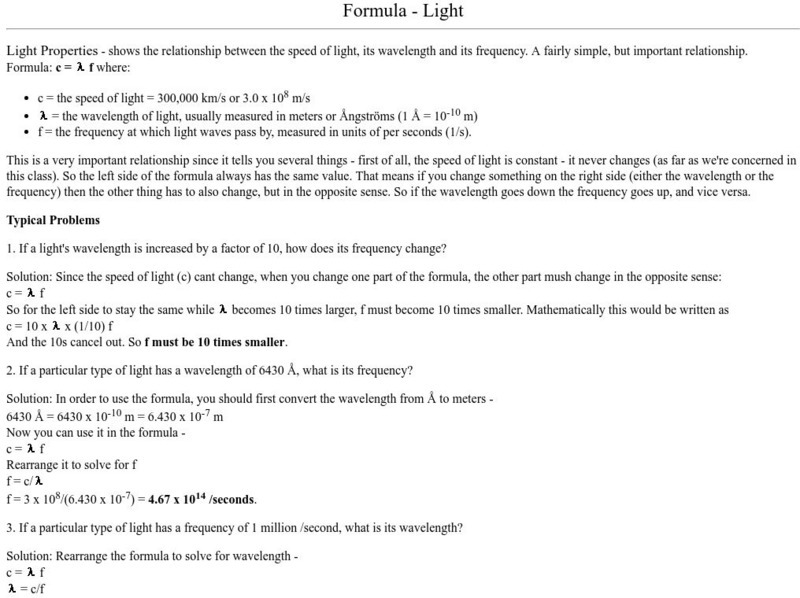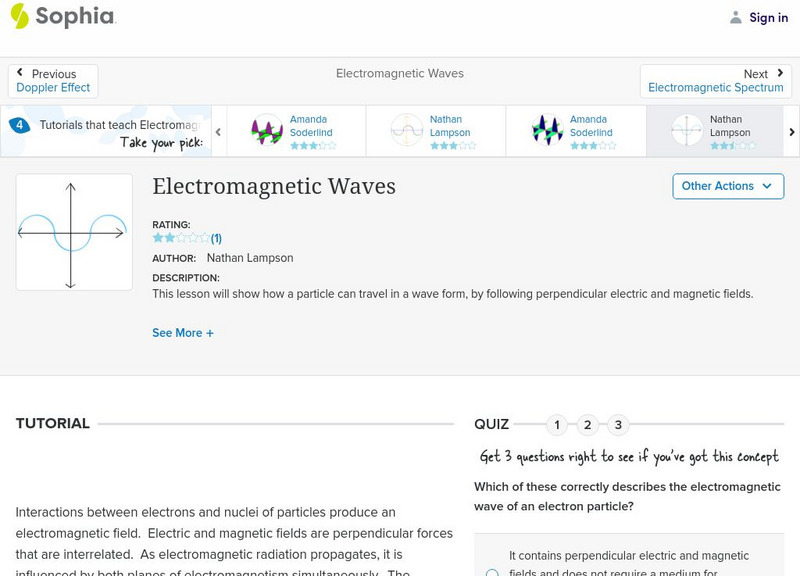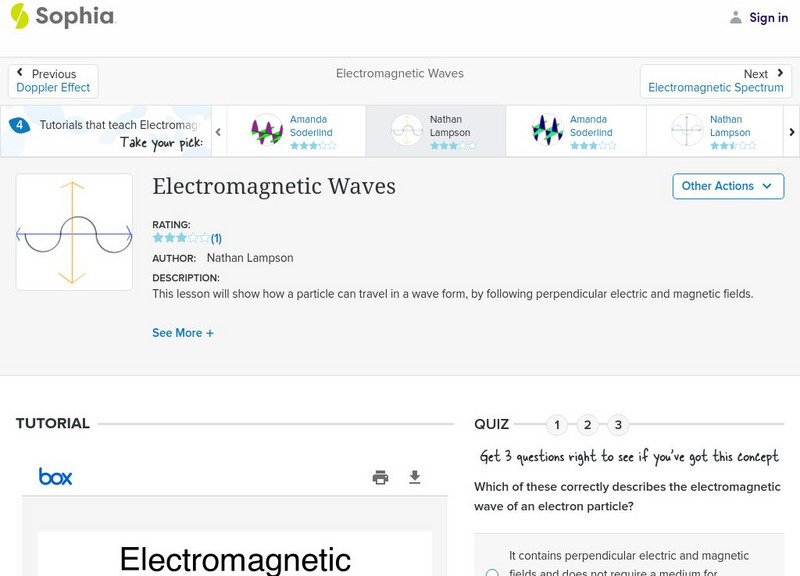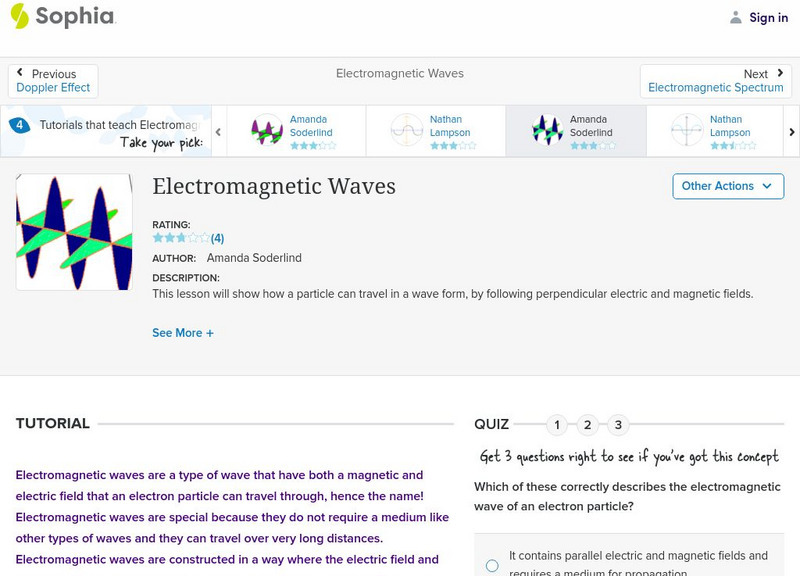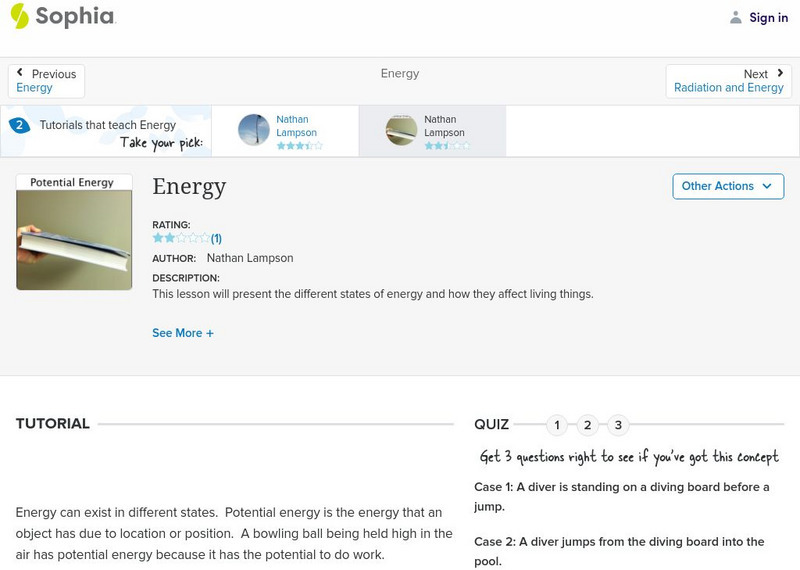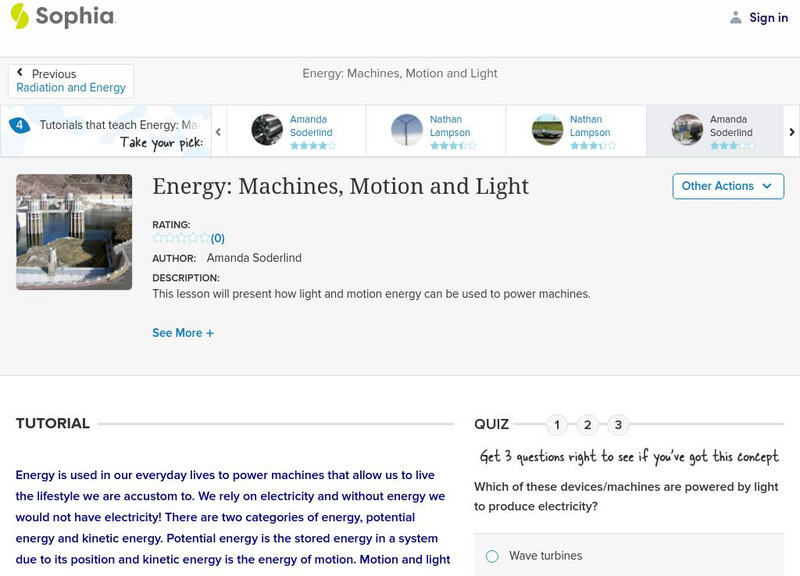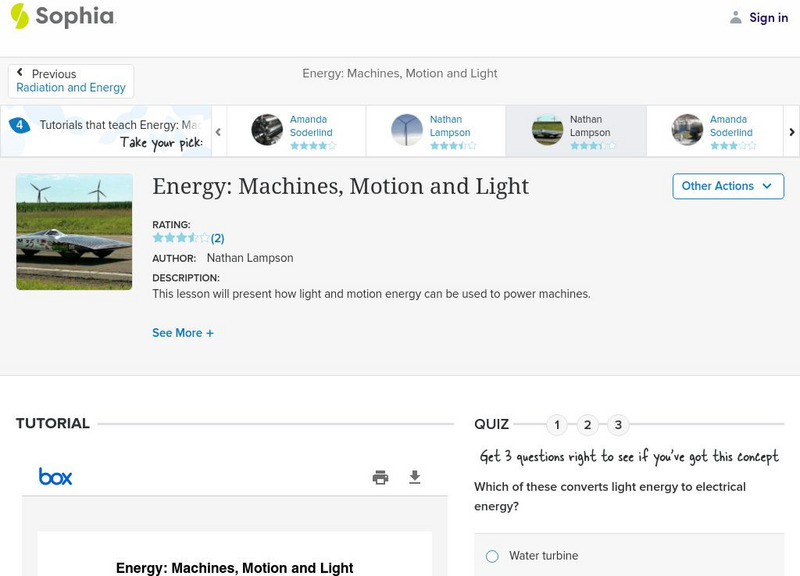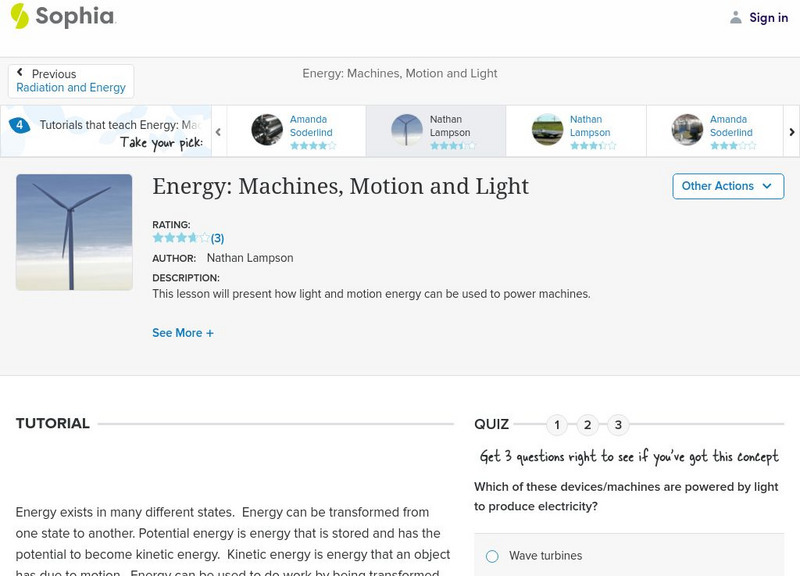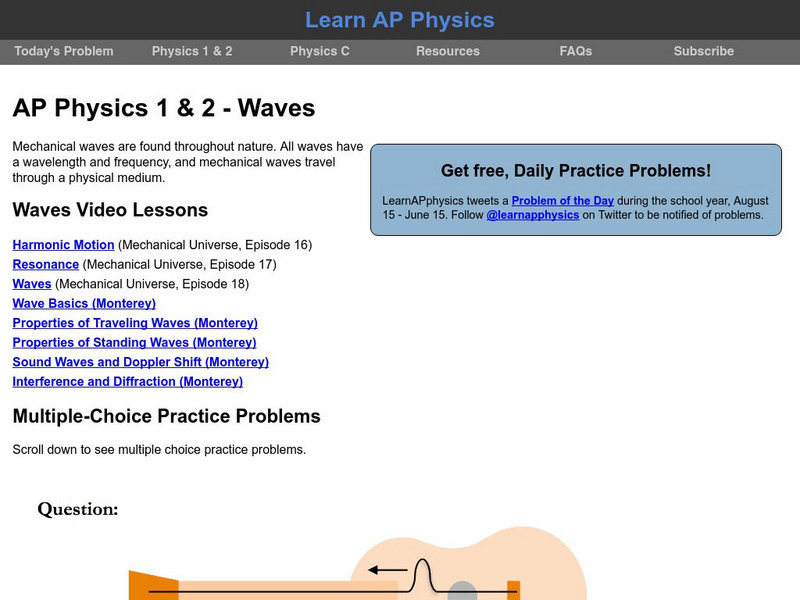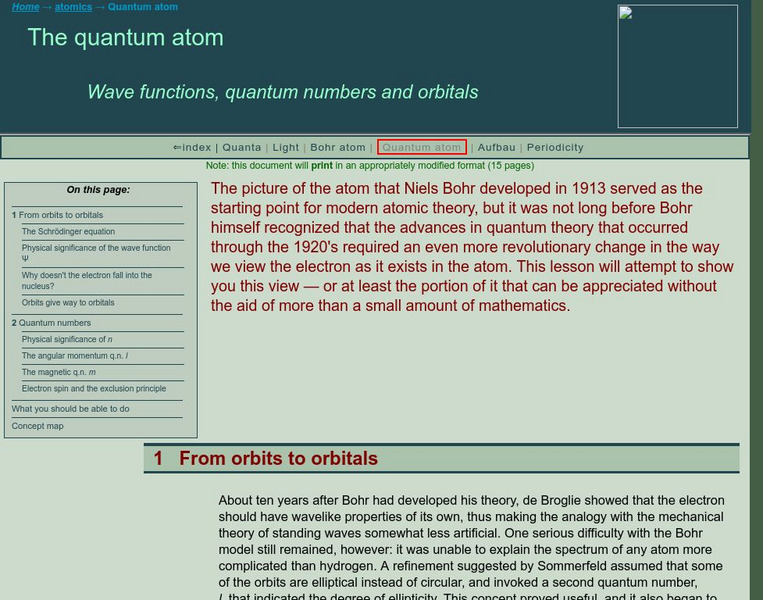Texas A&M University
Texas A&m University: Properties of the Ocean Activities
This site is from the Texas A&M University provides a lesson plan on measurement and properties of the ocean. As part of the instructional activity students are challenged to create a model of an underwater amusement park. Web...
University of Minnesota
University of Minnesota: Applications of Waves in Your Everyday Life
This site offers a variety of everyday activities and everyday experiences in which waves or sound waves play a role.
Other
Uni: Astronomy: Formula Light
Learn about light properties through practice with formulas. This resource shows the relationship between the speed of light, its wavelength, and its frequency. A fairly simple, but important relationship.
Sophia Learning
Sophia: Electromagnetic Waves: Lesson 2
This lesson will show how a particle can travel in a wave form, by following perpendicular electric and magnetic fields. It is 2 of 4 in the series titled "Electromagnetic Waves."
Sophia Learning
Sophia: Electromagnetic Waves: Lesson 3
This lesson will show how a particle can travel in a wave form, by following perpendicular electric and magnetic fields. It is 3 of 4 in the series titled "Electromagnetic Waves."
Sophia Learning
Sophia: Electromagnetic Waves: Lesson 4
This lesson will show how a particle can travel in a wave form, by following perpendicular electric and magnetic fields. It is 4 of 4 in the series titled "Electromagnetic Waves."
Sophia Learning
Sophia: Energy: Lesson 4
This lesson will present the different states of energy and how they affect living things. It is 4 of 7 in the series titled "Energy."
Sophia Learning
Sophia: Energy: Machines, Motion and Light: Lesson 3
This lesson will present how light and motion energy can be used to power machines. It is 3 of 4 in the series titled "Energy: Machines, Motion and Light."
Sophia Learning
Sophia: Energy: Machines, Motion and Light: Lesson 4
This lesson will present how light and motion energy can be used to power machines. It is 4 of 4 in the series titled "Energy: Machines, Motion and Light."
Geography 4 kids
Geography4 kids.com: Surf's Up Dude!
"Surf's Up Dude!" features waves of energy. Identify types, structures, and ways to measure waves.
Geography 4 kids
Geography4 kids.com: Shortwave and Longwave Radiation
Understand the two types of waves featured within this text.
Sophia Learning
Sophia: Energy: Machines, Motion and Light: Lesson 2
This lesson will present how light and motion energy can be used to power machines. It is 2 of 4 in the series titled "Energy: Machines, Motion and Light."
Ducksters
Ducksters: Practice Science Answers: Easy Light, Sound, Color
Take this quiz that contains basics questions on light, sound, and color.
Ducksters
Ducksters: Earth Science for Kids: Tsunamis
Investigate tsunamis including what causes them such as earthquakes, where they occur, why they are dangerous, and what happens during a tsunami event on this website.
Ducksters
Ducksters: Physics for Kids: Behavior of Light as a Wave
Kids learn about the behavior of light as a wave in the science of physics including reflection, refraction, and diffraction.
Ducksters
Ducksters: Physics for Kids: Wave Behavior
Kids learn about the behavior of waves in the science of physics including reflection, refraction, diffraction, polarization, absorption, and interference.
Ducksters
Ducksters: Physics for Kids: Wave Physics Glossary and Terms
Kids learn about the glossary and terms of waves in the science of physics including frequency, amplitude, transverse, mechanical, longitudinal, and more.
Learn AP Physics
Learn Ap Physics: Physics B: Waves
A site dedicated to help students prepare for the AP Physics B test. This specific site reviews waves including traveling waves, standing waves, resonance, speed of electromagnetic waves, Doppler shift, Doppler effect, interference,...
ClassFlow
Class Flow: Oceans in Motion
[Free Registration/Login Required] This flipchart is about the movement of oceans. It contains information about waves, tides, and currents. The flipchart contains video and Activote assessment questions.
ClassFlow
Class Flow: Sound Review
[Free Registration/Login Required] How does sound travel and what parts of the ear detect sound best? Using multiple websites, students discover animals that make the loudest sounds, which tapped glass will create the highest pitch, what...
Synopsys
Synopsys: A Gentle Intro to Optical Design: Why Is the Sky Blue?
Discusses Rayleigh scattering in plain language and attributes the blueness of the skies to this phenomenon. Discussion of scattering is just one topic of many on this lengthy page of optical topics.
ClassFlow
Class Flow: Electromagnetic Spectrum
[Free Registration/Login Required] In this Flipchart, students are introduced to the electromagnetic spectrum. Students will learn the names of the types of waves, and the order in which they are arranged. Additionally, students will...
Exploratorium
Exploratorium: Snacks
Exploratorium's snacks aren't edible, but they are good! Use your science skills to discover gravity, learn about biology, do fun experiments.
Simon Fraser University
Chem1 Virtual Textbook: Physical Significance of the Wave Function
Acting as a subtopic of the General Chemistry Virtual Textbook's section on Atoms and the Periodic Table, this site discusses the wave function in relation to orbitals and continual waves.


